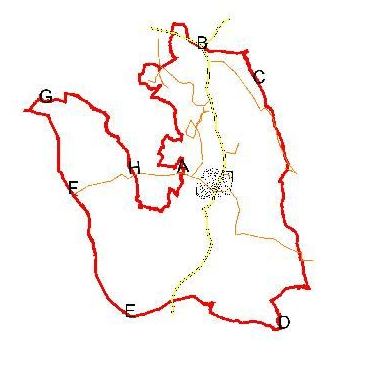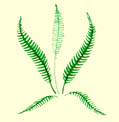The Fernhurst Society
Newsletter no 26, November
2006
Final Events for 2006
Thursday 23rd November AGM and talk ‘Return to Everest’
In view of the highly successful Autumn BBQ replacing the traditional
Christmas Party, the last event in the Village Hall for the year will
be the AGM, followed by the talk “Return to Everest” by George
Band. George was the youngest member of John Hunt’s first successful
Everest Expedition in 1953. Meet at the Village Hall, 7.30pm for 8pm start.
Saturday 2nd December – Launch of ‘Voices of Fernhurst’
Fernhurst Centre – 10 to 12pm
The first output of the Oral History Project,
the book ‘Voices of Fernhurst’
is expected to be published in early December. It will contain extracts
from many of the 60 or so interviews that had been completed by the end
of 2005 and will contain many illustrations mostly drawn from the Fernhurst
Archives, but also with original sketches by the Fernhurst Art Group.
The result gives a fascinating and lively picture of how life in Fernhurst
changed in the course of the 20th Century, as seen through the eyes of
its residents. It is planned to launch the book on Saturday 2nd December
at the Fernhurst Centre, between 10am and noon. So put this date in your
diary. The book will be priced at £6.00 and will be available from
the Centre or by post from Anthony Davies, Little Bridgelands, Fernhurst,
GU27 3JF (Tel: 01428 656706). A charge will be made to cover postage.
This project is being funded by the Local Heritage Initiative, sponsored
by the Heritage Lottery Fund. Any profits from the book will go to support
other community projects.
Helping To Run the Fernhurst Society
The Society Executive Committee – There are three people still
on the committee who were on the original Executive Committee –
that’s amazing and we thank them very much. There are several who
have been on the Committee for a number of years and would like to step
down. Our constitution requires us to have 11 members on the committee,
excluding the officers, so we are looking for several new people. There
are only 6 meetings a year and not everybody can turn up to each meeting.
If you have enjoyed what the Society has organised, could you please think
about repaying that by joining us on the committee. Honestly it doesn’t
take much time and as you know it is a very worthwhile society to support.
Please call Robin Barnes for more details, tel: 01428 654088.
Keeping you informed by e-mail
Many members have asked us if we can send updates and reminders of forthcoming events by e-mail. We have therefore set up a system to do this, which is within the guidelines and regulations concerning data protection.
We will need your agreement to use your e-mail address for Fernhurst Society news. On the membership renewal form enclosed with this newsletter, you will see a section where you can provide your e-mail address. Alternatively, send an e-mail containing your name and confirming your e-mail address to the Society's email
We have no reason to pass your e-mail information to any third party organisations, and will keep your e-mail address secure on our members database.
We will still continue to advertise forthcoming events via Fernhurst News,so don’t worry if you do not have an e-mail , or do not want to receive news this way.
A Look at Recent Events
Beating the Bounds- Fernhurst Boundary Walks
After 4 years of biannual walks we have completed the perambulation of the Fernhurst Parish Boundary! The idea was conceived by Iain Brown, inspired by reading the account of a perambulation in 1837.
During the 19th century the parish leaders walked the parish boundary to check that land belonging to the parish was clearly marked and to establish the tithe arrangements. This was in the context of the 1836 Tithe Act, which changed the collection of tithes (literally one-tenth of income from produce) into payments associated with current produce prices. The parish leaders did not have local maps so wrote up the boundaries as an account of the perambulation with graphic commentaries, checking boundary stones and recording the route using field and house names.
We obtained a copy of the 1837 perambulation from the Sussex Record Office in Chichester and used this as a model for a 21st century perambulation, starting in April 2003.
We split the parish boundary into eight stretches which were “walkable” in a half or full day and over the following four years we have done spring and autumn walks, working our way clockwise around the boundary, starting at Highbuilding along Vann Road. Each stretch was led by one or two volunteers who researched the route beforehand, giving a different flavour to the outings.
For each leg we have had between 15 and 40 people turning out with dogs and children, all happy to trudge through along footpaths and unchartered territory, as local land owners were very generous in allowing us, for this purpose only, to leave the public footpaths to follow the boundary.
For those not familiar with the shape of the Fernhurst Parish, the northern edge of the parish is where Bell Vale Lane meets the A286 and the southern end is marked by The Duke of Cumberland. To the east, Fernden Lane lies just inside the boundary, but the western edge is more complex, with a long tongue of Lynchmere extending from the north so that although the western point is where Vann Road meets the Liphook / Milland Road, in between there is a stretch of Lynchmere (see map).
The first leg of the perambulation was from Highbuilding (A), up over Marley and down to the junction of Bell Vale Lane and the A286 (B). It was a spring walk, amongst the bluebells, with a picnic looking across the valley from the top of Marley. The highlight of the day was having to cut our way through the undergrowth coming down off Marley as we attempted to follow the very recently established new boundary for that part of the parish. A machete came in very handy! At the bottom we raised three cheers, emulating the 1837 walkers who at that point retired with a sovereign to the Blue Bell Inn (sadly for us, no longer there).

The next stretch, in the autumn of 2003, was a damp affair but much enjoyed, with a pleasant diversion into the gardens of Lowder Mill, by kind permission of the owners. This walk took us to Vale Wood on the north east side of the parish (C) where the boundary then goes along the middle of a series of ponds.
In the spring of 2004 a good day’s walk picked up the boundary at Fernden Lane (we declined to try to follow it up the middle of the ponds!) and followed it up to Bexley Hill (D), with archaeological diversions noting the Roman tile kilns in that area. The enthusiasts then walk the extra mile for a drink at the Duke, although it did cost a bit more than a sovereign!
The autumn 2004 walk was a delightful stroll from Bexley Hill across
the Scotland Farm (along from King Edward VII – point E), risking
life and limb crossing the A286 on the Henley Hill! A halfway stop at
Henley for much welcomed fresh lemonade was accompanied by reminiscing
by some of the walkers who grew up in that area. Our leader also provided
some fascinating social history about how local people would have lived
in 1837. This was also one of the few places where we found an original
boundary stone. (For more details about this stretch see the Fernhurst
Society website).
The first walk in 2005 took us downhill from Scotland Farm to Elmers Marsh
(where Vann Road meets the Lickfold Road - point F). This time we heard
lots of interesting information (or was it gossip?) about the people who
lived in the various houses (and ruins) we passed on the way. Elmers Marsh
to Poison Copse (just below Lynchmere Church – point G) was the
autumn 2005 outing, uphill and quite a challenge through thick coppice
in some areas, the leaders confused by compasses not working due to the
high iron ore content of the area.
Finally this year we have completed the last two legs, from Poison Copse to Lower Lodge (H) and the final loop round back to Highbuilding. The spring walk was marked by a heavy downpour, but despite this we had a good turnout of stalwart “perambulators” and learnt much about local land management, coppicing and charcoal burning. The final leg, just a few weeks ago, included yet two more boundary stones (one almost buried in a tree that is gradually growing round it), an explanation of the Fernhurst Furnace site and some challenging barbed wire fencing hopping!
Each walk had a different flavour and we would like to thank very much
the following people for all their hard work in putting together such
interesting outings: Julia Roxan, Sandy Polak, Elsie and Arthur Waitt,
Iain Brown, Jackie Kennett, Judith Turner (who did more than her fair
share!) and Robin Barnes.
Finally, an explanation of the term “Beating the Bounds”.
The tradition of walking parish boundaries dates back to 470AD in Vienna,
gradually spreading across Europe. At some point willow wands (to ward
off the devil) were used to beat the stones marking the boundary. It is
said that the heads of small boys were also used, to make sure they remembered
the route. We refrained from such practises on our walks!

